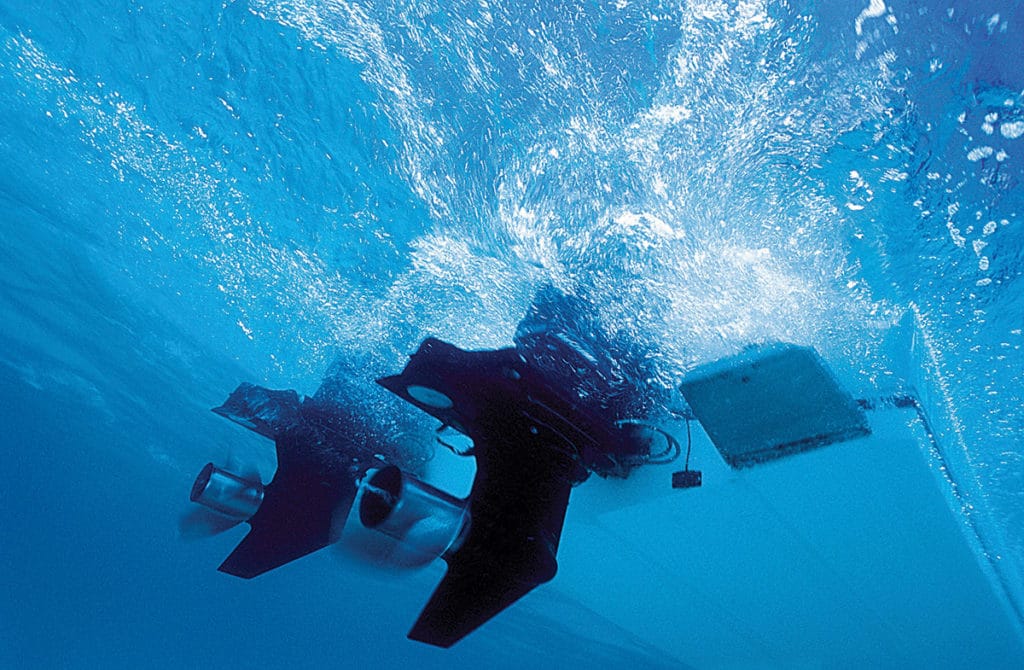
We had enjoyed a glorious day of tuna fishing but stayed out too late. Now we were running home in the dark. Spirits soared, until … kerthump! A jarring collision with something in the water kicked up the lower unit and rattled our nerves. The mood turned somber as we shut down, trimmed the outboard and peered astern to assess the damage. The prop looked OK and the gear case was intact, so we continued home, albeit more cautiously, without further incident.
There’s lots of flotsam and jetsam out there, be it timbers, crab pots or animals. And of course, there are shoals. Captain a boat long enough, and your running gear will eventually suffer a run-in with a hard target.
After this happens, what do you do? Here are five steps.
1. Check for Leaks
Shut down and look in the bilge and lazarette for leaks as a result of the strike. A friend of mine lost an entire Volvo Penta Duoprop drive when he struck a tuna pen in the dark off northern Baja California. Inboards can suffer leaks around the prop shaft or rudder seal. Do your best to plug any leaks and get everyone in life jackets.
2. Inspect the Running Gear
Assuming there are no leaks, examine the running gear. Tilt up the outboard(s) or sterndrive(s) to check for cracked gear cases, bent skegs or mangled propellers. Don a mask and snorkel, and jump in to check inboard running gear, a pod drive or jet drive and its intake grate. In cooler climes, carry a point-of-view camera such as a GoPro with a waterproof case; put it on a pole that reaches under the boat, and play back the footage. Serious damage that leaves you dead in the water means a call to a towing service such as Sea Tow or TowBoatU.S. If the water’s shallow enough, get the anchor down while you wait for help to arrive.
3. Proceed Cautiously
Even if you don’t find anything, proceed slowly. Damage such as a misaligned rudder or dinged prop hub can be hard to detect, but may manifest itself in poor steering control or an engine that suddenly over-revs as you lose propulsion. Power up slowly and check your ability to steer. Accelerating gradually can also help prevent a damaged prop hub from giving way altogether.
4. Listen for Noise and Vibration
Pay close attention to any odd noise or vibration as you get underway. If you hear something, slow down immediately and limp home. This is often the sign of a bent prop shaft or propeller. With multiple engines, shut down one at a time to see if the noise or vibration stops. If you can isolate the problematic drivetrain, use the other engine(s) to get home.
5. Haul the Boat
Another friend of mine once hit a dead seal with his inboard running gear. Everything seemed OK afterward, but he had the boat hauled and the yard found a bent prop blade. Lesson here: Make arrangements to have a professional inspect the running gear after a strike, before the next trip. That’s what I call a bump check.
Quick Tip: If you suffer a strike with an outboard or sterndrive, have the prop hub checked by a prop shop, as there may be unseen damage.









